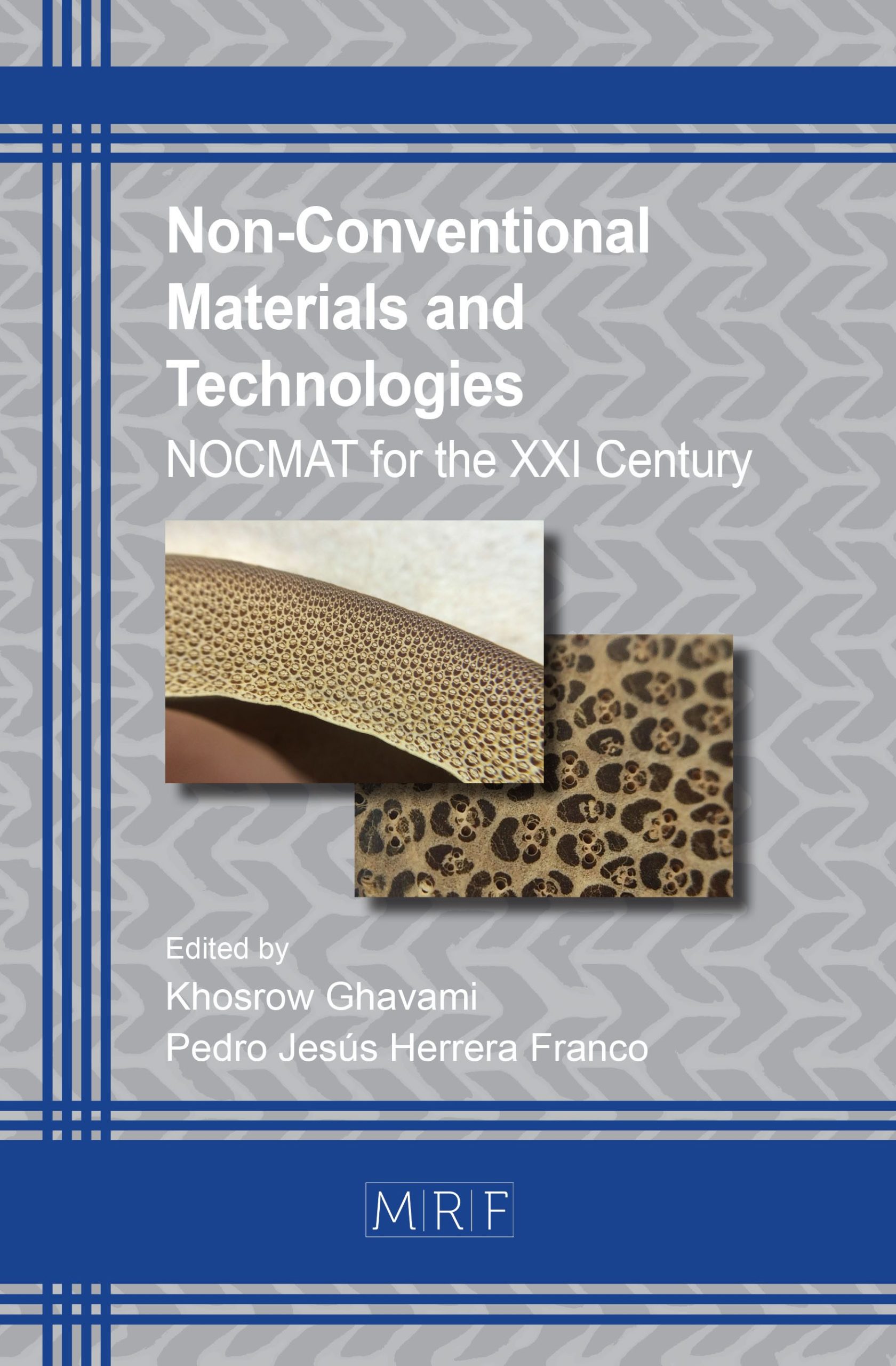Evaluation of the Mechanical Behavior of Composites Reinforced with Vegetal Fibers
M.L. Sánchez, L.Y. Morales, J.D. Caicedo
Abstract. At present, composites reinforced with vegetal fibers constitute one of the main areas of interest in the research and development of new materials. The chemical characteristics of most vegetable fibers and the fact of their being rich in hydroxyl groups determine their mechanical behavior and allow them to be used as reinforcement in polymeric composites, which use resins based on polyurethanes. This study analyzes the effect of fiber orientation and surface treatment on the mechanical performance of panels constructed using non-conventional materials made from fibers and resin of vegetable origin. To evaluate the effect of the orientation of the fibers on the performance of the composite, two fiber typologies were analyzed: long unidirectional fibers and randomly distributed short fibers. To improve the adhesion of the fibers to the matrix, a process of surface modification was carried out, using two types of treatment: chemical and plasma. As a matrix of the composite, the use of a material of vegetal origin is proposed: a polyurethane from Higuerilla. The fibers were obtained via the mechanical method. A pressing method was used for the construction of the panels. The physical characterization was based on the determination of the density, effective absorption, and dimensional stability. The mechanical characterization focused on the determination of the maximum tensile strength through compression and static bending tests. The results obtained demonstrate the viability of the use of vegetal fibers as reinforcement for natural composites.
Keywords
Vegetal Fibers, Mechanical Properties, Static Bending, Tensile, Compression
Published online , 9 pages
Copyright © 2018 by the author(s)
Published under license by Materials Research Forum LLC., Millersville PA, USA
Citation: M.L. Sánchez, L.Y. Morales, J.D. Caicedo, ‘Evaluation of the Mechanical Behavior of Composites Reinforced with Vegetal Fibers’, Materials Research Proceedings, Vol. 7, pp 440-448, 2018
DOI: http://dx.doi.org/10.21741/9781945291838-41
The article was published as article 41 of the book Non-Conventional Materials and Technologies
References
[1] Kumar N, Das D. Fibrous biocomposites from nettle (Girardinia diversifolia) and poly (lactic acid) fibers for automotive dashboard panel application. Composites Part B 2017:130:54-63. https://doi.org/10.1016/j.compositesb.2017.07.059
[2] Jacob M.J, Thomas S. Biofibers and biocomposites. Carbohydr Polym 2008:71:343-364. https://doi.org/10.1016/j.carbpol.2007.05.040
[3] Abel P, Lauter C, Gries T, Troester T. Textile composites in automotive industry. In: Carvalli V, Lomov SV, editors. Fatigues of textile composites. Amsterdam: Elsevier 2015: 383-401. https://doi.org/10.1016/B978-1-78242-281-5.00016-X
[4] Kalia S. et al., Cellulose Fibers: Bio- and Nano-Polymer Composites, Springer-Verlag Berlin Heidelberg 2011. https://doi.org/10.1007/978-3-642-17370-7
[5] Nevell T.P, Zeronian S.H.Cellulose chemistry and its applications. Wiley, New York, 1985.
[6] Toumis G.T. Structure, properties and utilization. Science and technology of wood.Van Nostrand Reinhold, New York, 1991, p 494.
[7] Pietak A, Korte S, Tan E, Downard A, Staiger M.P Atomic force microscopy characterization of the surface wettability of natural fibres. Appl Surf Sci 2007:253:3627–3635. https://doi.org/10.1016/j.apsusc.2006.07.082
[8] Tomczak F, Demetrio Sydenstricker T.H, Satyanarayana K.G et al. Studies on lignocellulosic fibres of Brazil Part II: morphology and properties of Brazilian coconut fibres. Compos Part A 2007:38:1710–1721. https://doi.org/10.1016/j.compositesa.2007.02.004
[9] Luna P., Lizarazo-Marriaga J., Mariño A. Guadua angustifolia bamboo fibers as reinforcement of polymeric matrices: An exploratory study. Construction and Building Materials 2016:116:93-97. https://doi.org/10.1016/j.conbuildmat.2016.04.139
[10] Shi T., Shao M., Zhang H., Yang Q., Shen X. Surface modification of porous poly(tetrafluoroethylene) film via cold plasma treatment. Applied Surface Science 2011:258(4):1474-1479. https://doi.org/10.1016/j.apsusc.2011.09.110
[11] Barra B.N., Santos S.F., Bergo P.V.A., Alves Jr. C., Ghavami K., Savastano Jr H.Residual sisal fibers treated by methane cold plasma discharge for potential application in cement based material. Industrial Crops and Products 77(2015):691-702. https://doi.org/10.1016/j.indcrop.2015.07.052
[12] Yuan X., Jayaraman K., Bhattacharyya D.Effects of plasma treatment in enhancing the performance of woodfibre-polypropylene composites, Composites Part A: Applied Science and Manufacturing 35(12) (2004):1363-1374. https://doi.org/10.1016/j.compositesa.2004.06.023
[13] Sever K., Erden S., Gülec H.A., Seki Y., Sarikanat M.Oxygen plasma treatments of jute fibers in improving the mechanical properties of jute/HDPE composites, Materials Chemistry and Physics 129(1)(2011):275-280. https://doi.org/10.1016/j.matchemphys.2011.04.001
[14] Brígida A.I.S., Calado V.M.A., Gonçalves L.R.B., Coelho M.A.Z. Effect of chemical treatments on properties of green coconut fiber. Carbohydrate Polymers 79(2010):832–838. https://doi.org/10.1016/j.carbpol.2009.10.005
[15] Rokbi M., Osmania H., Imad A., Benseddiq N.Effect of Chemical treatment on Flexure Properties of Natural Fiber-reinforced Polyester Composite, Procedia Engineering 10(2011): 2092–2097. https://doi.org/10.1016/j.proeng.2011.04.346
[16] Akhtara M.N., Sulong A.B., Fadzly Radzi M.K., Ismail N.F., Raza M.R., Muhamad N., Khan M.A.Influence of alkaline treatment and fiber loading on the physical and mechanical properties of kenaf/polypropylene composites for variety of applications, Progress in Natural Science: Materials International 26(2016):657–664. https://doi.org/10.1016/j.pnsc.2016.12.004
[17] Orue A., Jauregi A., Unsuain U., Labidi J., Eceiza A., Arbelaiz A. The effect of alkaline and silane treatments on mechanical properties and breakage of sisal fibers and poly(lactic acid)/sisal fiber composites, Composites: Part A 84(2016):186–195. https://doi.org/10.1016/j.compositesa.2016.01.021
[18] Fiore V., Di Bella G., Valenza A. The effect of alkaline treatment on mechanical properties of kenaf fibers and their epoxy composites, Composites: Part B 68(2015):14–21. https://doi.org/10.1016/j.compositesb.2014.08.025
[19] ASTM D2395-14. Standard Test Methods for Density and Specific Gravity (Relative Density) of Wood and Wood-Based Materials. Annual Book of ASTM Standards, 2014.
[20] ASTM D4442. Standard test method for direct moisture content measurement of wood and wood-based materials. Annual Book of ASTM Standards, 2016.
[21] ASTM D1037. Standard Test Methods for Evaluating Properties of Wood-Base Fiber and Particle Panel Materials. Annual Book of ASTM Standards, 2012.































